
Sunday May 08, 2005
New Fly Lancia 037
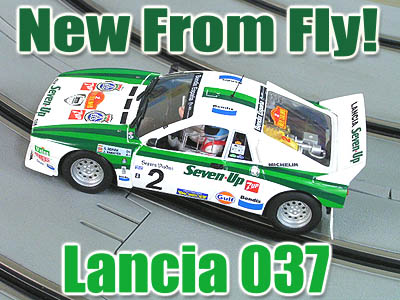
If you are the type of enthusiast who enjoys fine scale detail, then this latest Lancia 037 from Fly Car Model is worth a second look. When this car arrived safe and sound from SlotCarPlace, I was more than impressed with the level of detail Fly has achieved. Of course there is more to a slot car than how it looks, so let's dive in and put this model through it's paces.
Hopefully the photos here tell you all you need to know. I compared this model to several photos of the prototype and to me it appears Fly has done an excellent job re-creating it in scale. Detail here is at a high level and just draws you in to look even closer. Tampo stamping here is well done, although there are a few very small areas that had some fading. It isn't a major flaw really and while it is sitting on the track you can't really notice them at all.
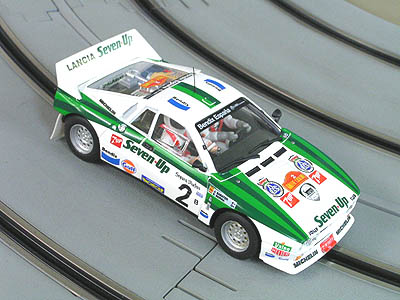
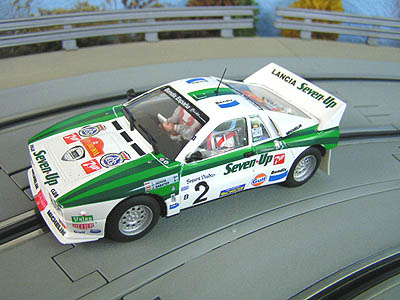
Not every enthusiast appreciates this level of detail, but I am one that does. Although some racers complain about areas such as the mirrors, rear mud flaps (These rear are made of a more flexible plastic and are actually quite durable), and exhaust being too delicate, I feel Fly designed this car the way it should be done. It is this level of detail that has made Fly as popular as they are today and changing it now would not make sense. Hard crashes are of course going to result in damage over time, but this can be said about almost any RTR car on the market.
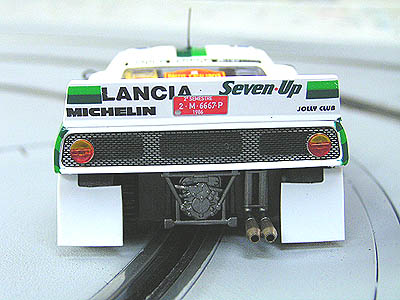
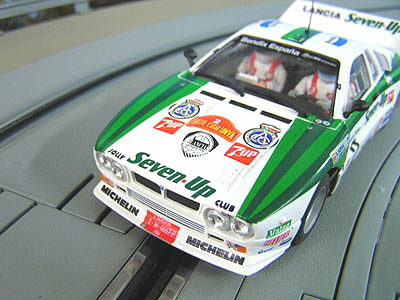
Looking at all this detail really makes me stop and think how truly fortunate we are in this hobby today. I know there are some enthusiasts out there that have the talent and skills to build a model like this, but I am certainly not one of them. Having a model that has this level of realism and detail ready to run out of the box is one of the reasons I enjoy this hobby as much as I do. In just a few minutes I am letting the rubber meet the road with a scale race car and all I had to do was add a few drops of oil.
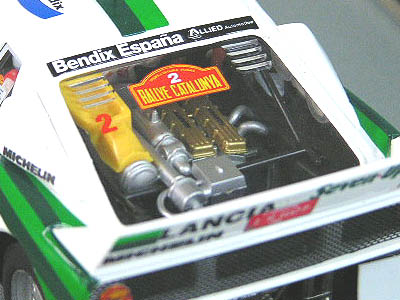
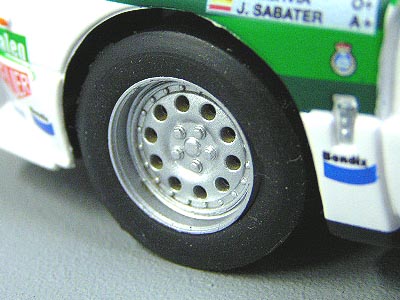
Speaking of rubber, the tires here are the now standard Fly compound found on the recent GT-40 and Porsches. With just a little sanding these tires hook up very nicely on our smooth Artin track surface. Wheels were also round and true and I did not see any issues with flash molding or any evidence of cracked hubs.
Underneath we see one of the first new changes with this model. Fly has still equipped this model with their standard bar magnet, but now it is designed to be adjustable. It works very well too as I slide the magnet easily in this new pocket. 4 screws were removed to get a closer look inside and here is where we see a couple more surprises.
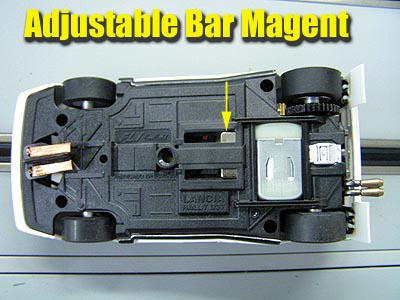
On The Inside
Up front we see another pocket molded in the chassis. It is perfect for those looking to remove the rear bar magnet and adding a button magnet up front. This would give you a slight pinning action up front and allow the rear to slide more realistically. Heavy magnet racers could also add a button magnet to increase overall magnetic traction while still having the rear bar magnet. However, looking at this design also tells me that conversion to digital format is also easier with the hole already made for sensor placement.
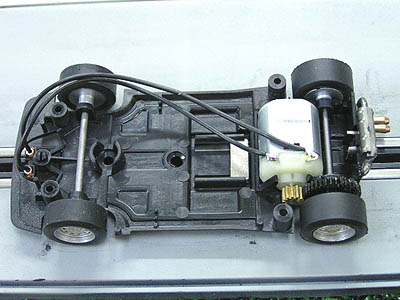
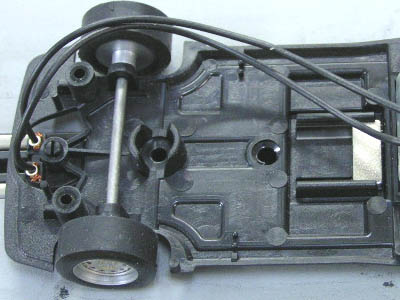
You can also see the new front axle design Fly has chosen on this car. The axle now sits in brackets that allow vertical movement which really helps to give you perfect guide height in the slot. Some tracks do have slightly uneven surfaces and this design helps to compensate for them. The amount of free-play is not enough to cause major body roll such as we see in some NINCO models, but I still set my model up to reduce almost all of it. I used the same method on this model that I have done with all my other NINCO cars by just adding some styrene tubing under the axle while the car sits on a spare piece of straight track.
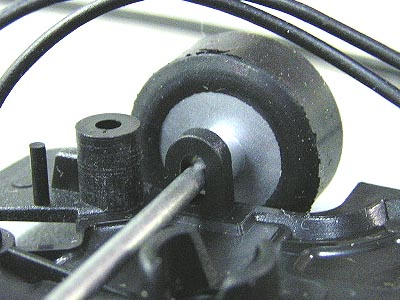
The car comes equipped with the standard Fly Mabuchi power-plant with a 11 tooth pinion driving a 36 tooth spur gear. One interesting surprise was to see that Fly has trimmed the excess motor shaft for us so that it cannot rub the rear tire. This shaft has always been the cause of rubbing issues in many of the Classics and other sidewinder designs and I have to say I was impressed that Fly actually is taking the time to correct it.
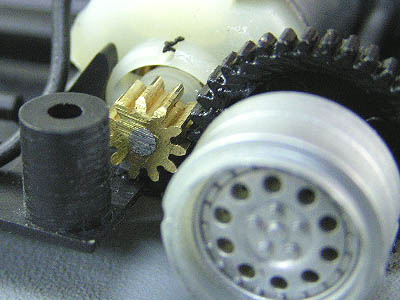
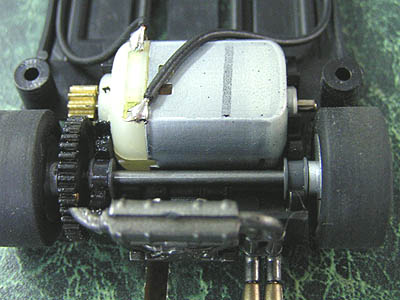
The other surprise is that the rear axle is held in place with plastic bushings instead of brass. Some enthusiasts will scoff at this change but it does not bother me at all. These bushings are very hard acetyl/nylon and fit the axle with almost no slop. Since these bushings are virtually self-lubricating, beginners (or even us old timers) who forget to oil them will be a little safer. I have to say that we have models here that are 4 to 5 years old that have literally hundreds of hours of operation on them with plastic bushings similar to this, and have never had a problem with any of them.
If there is one issue with this model it is with the motor mount. In our model, the motor has a good amount of free-play where it can easily twist under a load. The reason this is a problem is that the gear mesh distance between the pinion and spur gear is very important for reliable operation. In fact, the distance is little more than I am comfortable with. When the motor would twist, it would back off just slightly from the spur gear and almost cause the teeth to start stripping.
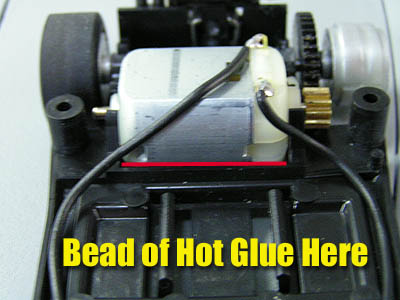
The fix was very simple though as I just used a small amount of hot glue as shown in the photo. This really holds the motor securely in it's mount yet the glue can be trimmed away easily in case of a motor change in the future. This gave the model increased gear mesh reliability on our model and so far with over 500 laps on it, I see no signs of failure. Does that mean it won't fail? Of course not, but I have other Fly Classics with almost the identical gear distance and they have been running just fine for years.
Road Test!
The car in stock form had lap time averages of 4.5 seconds on our Artin layout. This is with the bar magnet in the rearward position and tires un-sanded. Just sanding the tires to get a better contact patch put this car in the 4.3 send range easily. I then moved the bar magnet with a small flat tip screwdriver to the forward position and headed back to the track.
The difference was not dramatic, but it did allow the car to slide a little easier without so much of a break-away effect when the magnet lost the rails. I liked it this way as the drifting is easy to control, yet the model still has decent traction for hard punches out of the corners. Acceleration and braking were as crisp and responsive as I expected and the control should please most of you.
It was time to remove the magnet and head back to the track. To remove the magnet from the pocket, once you take the body off the chassis you will have to bend the chassis down on the sides to allow the magnet pocket guides to spread apart just enough for it to pop out.
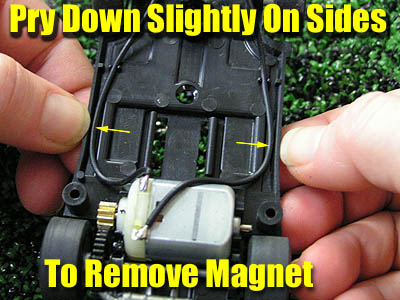
All I can say is that I was surprised how well this car handled without any added weight (the car weighs 2.7 ounces without the magnet in stock form). Control and grip were better than I expected and lap times were an average of 5.3 seconds. That is not a bad lap time average for non-magnet on our track, and at this time I think I will leave it just the way it is.
Of course the front magnet pocket just gives you even more tuning options. I tried several different magnets and they all act pretty much the same. You see the obvious pinning action up front, but you still have very easy control for drifting through the corners.
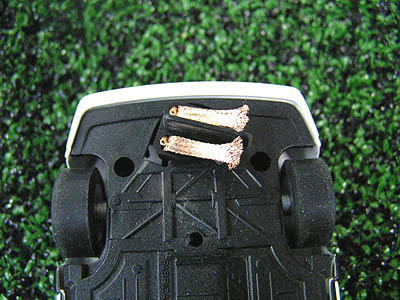
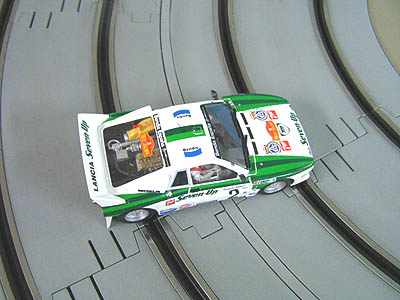
The amount of guide travel is also where it needs to be as the car can slide out almost completely sideways before the guide travel stops. Some enthusiasts might want more, but operation of the model on our track proved to me that this was more than enough.
Final Thoughts
Although I admit I am not much of a Rally fan in the 1:1 world, this model certainly makes me a fan in scale. With the Martini livery coming soon along with others to follow, this series will soon be a favorite on our track. Not every car that gets released has as much going for it as this model does, not only in detail and operation, but in the availability department as well.
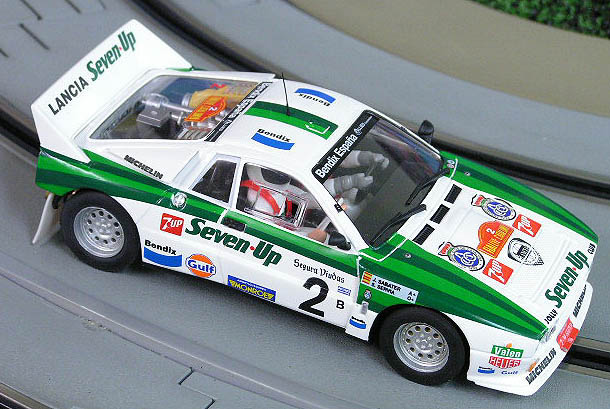
It isn't perfect, but then very few things are. It gives the enthusiast a good model to start with right out of the box, and also a great platform for advanced enthusiasts who enjoy the aspects of the tuning process. With all the choices we have in our hobby today I think you owe it to yourself to give this model a closer look.
- Harry
As always feel free to contact me about this article or just the hobby in general at harry@homeracingworld.com, or better yet drop into our Message Forum and share your thoughts with other enthusiasts!
Thanks Go To SLOTCARPLACE For Providing Us With This Model!